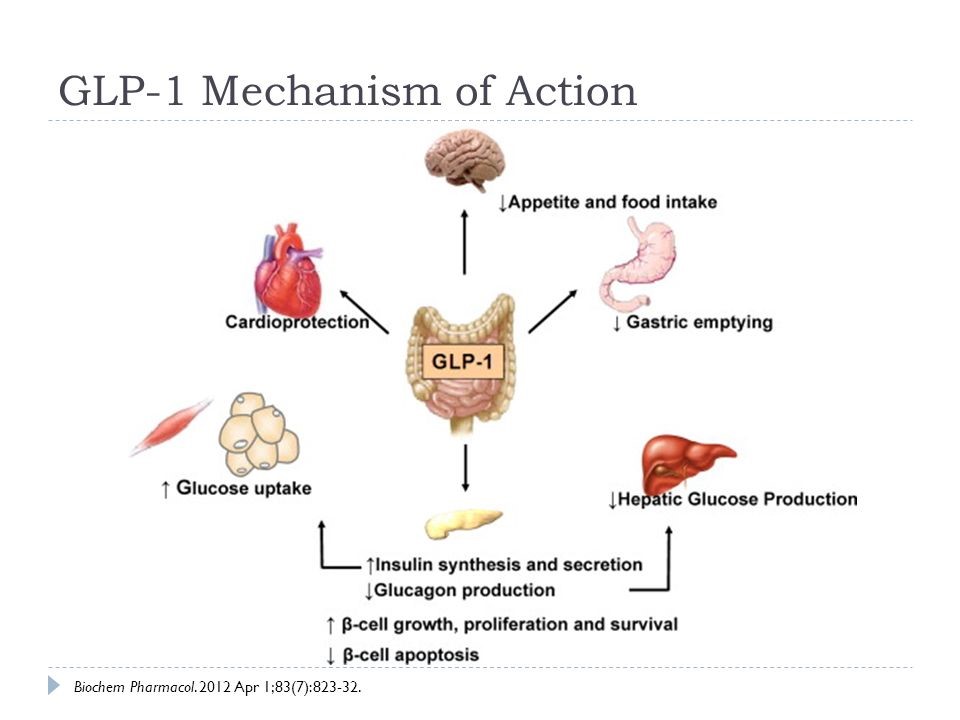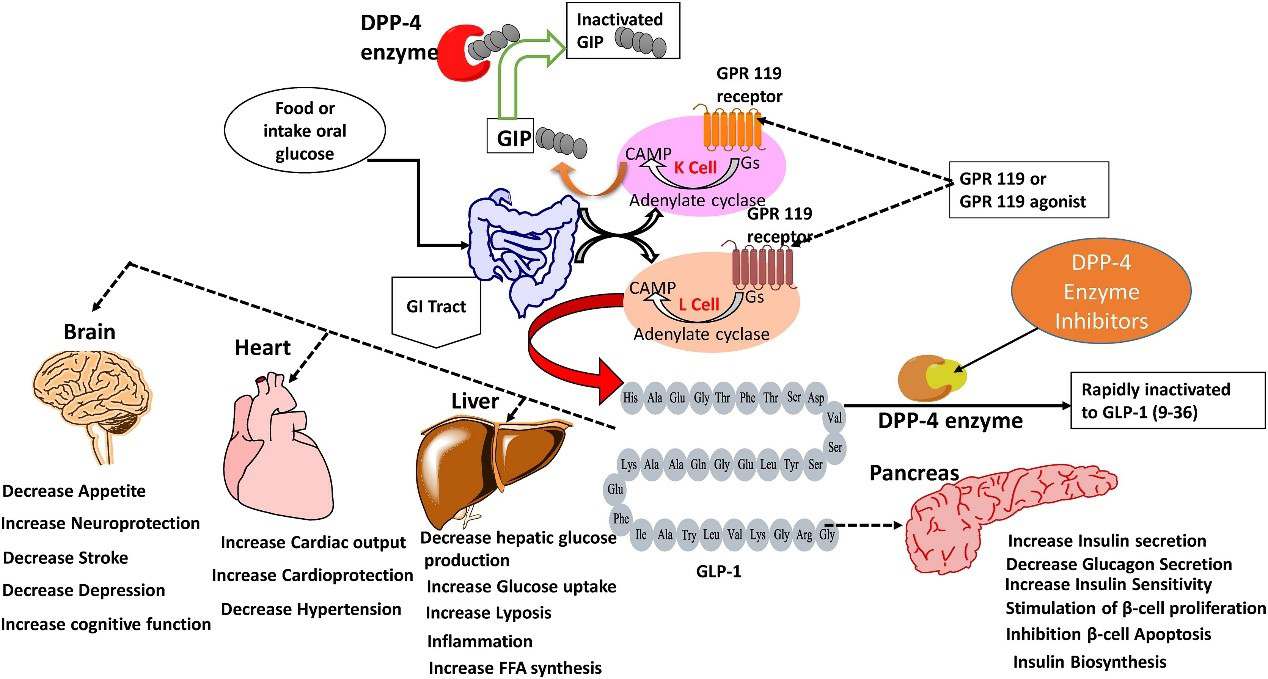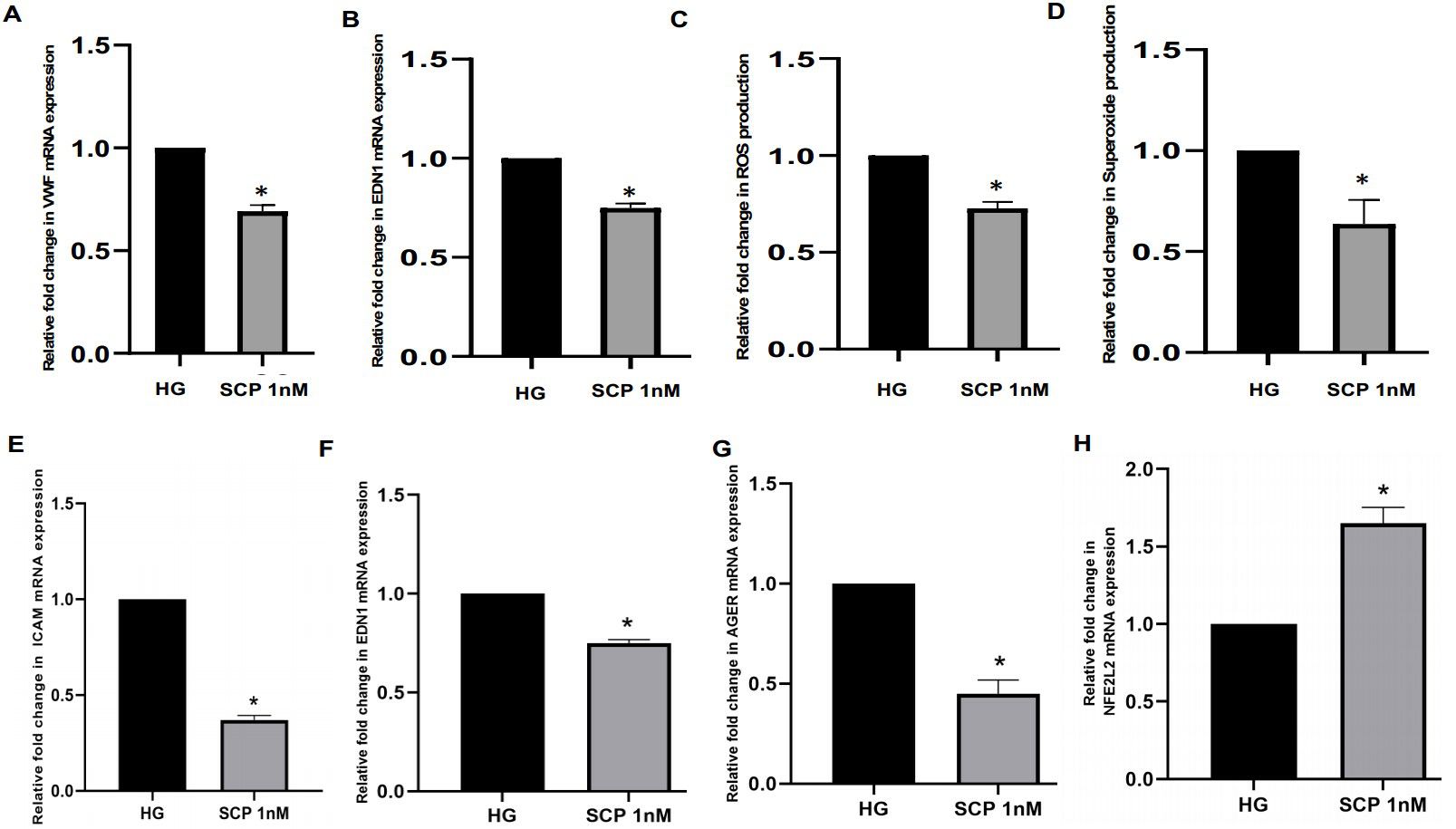According to the data of the World Health Organization (WHO), there are about 422 million people suffering from diabetes worldwide, and it is estimated that this number will increase to 700 million by 2045. And worldwide, one in every 11 people has diabetes. Diabetes is a chronic disease that occurs either when the pancreas does not produce enough insulin (a hormone that regulates blood sugar) or when the body cannot effectively utilize the insulin it produces. Diabetes mellitus can be classified into two main types: type 1 (previously known as insulin-dependent) and type 2 (formerly called non-insulin-dependent or adult-onset). Type 1 diabetes was characterized by absolutely lack of the production and secretion of insulin, due to destruction of the insulin producing pancreatic β-cells. Patients with type I diabetes require daily administration of insulin. In adults, type I diabetes accounts for approximately 5% of all diagnosed cases of diabetes. Type 2 Diabetes, which was characterized by insulin resistance and the body's inability to secrete enough insulin. 90% of diabetes cases belong to this type.
Peptides are chains of amino acids that are used in the body to communicate between cells. In the context of diabetes, certain types of peptides have been found to play significant roles both in the development of the disease and its potential treatment. Peptides can have therapeutic potential for individuals with diabetes due to their roles in glucose control and metabolism. Some of the current diabetic treatments are based on peptide hormones or their modifications. Moreover, researchers are investigating new peptide-based drugs to treat both type 1 and type 2 diabetes.
Therapeutic Use: Several peptides are being used or investigated for the treatment of diabetes. For example, glucagon-like peptide-1 (GLP-1) is often used in treating type 2 diabetes. It stimulates the release of insulin, reduces glucagon secretion and slows gastric emptying. Additionally, peptides such as pramlintide are used as adjunct treatment with insulin in type 1 and type 2 diabetes.
Diagnostic Use: Certain peptides, such as C-peptide (the connecting peptide), can be used to assess endogenous insulin production and to differentiate between type 1 and type 2 diabetes. People with type 1 diabetes have low or undetectable levels of C-peptide, while those with type 2 often have normal or increased levels.
Vaccine Development: Peptides can be used to create vaccines that can potentially prevent or treat autoimmune diseases, including type 1 diabetes. For instance, researchers are investigating the possibility of using insulin peptides to desensitize the immune system and prevent it from attacking beta cells.
Drug Delivery: Certain peptides can facilitate the delivery of drugs, especially insulin, across biological barriers. For example, researchers are working on insulin-loaded nanoparticles that are attached to a specific peptide which allows the insulin to be absorbed through the intestines.
Obesity Management: Peptides such as liraglutide and semaglutide, which act like GLP-1, are used for weight management in obesity which is a major risk for type 2 diabetes.

Diabetes is a chronic condition that affects the way the body processes blood sugar (glucose). Several drugs are used in its treatment and management. Some are peptide-based, making their classification vital. Here's a peptide-based classification of diabetes drugs:
Insulin
Insulin is a natural hormone produced by pancreatic beta cells. For the treatment of diabetes, insulin drugs are created and designed to mimic the actions of natural insulin.
Glucagon-like Peptide-1 Receptor Agonists (GLP-1 RAs)
GLP-1 is a hormone in the body that helps to regulate blood sugar levels by increasing insulin production and decreasing glucagon production. Examples include Exenatide (Byetta), Liraglutide, and Semaglutide (Ozempic).
Incretin Mimetics
These are peptides that mimic the effects of natural hormones in the body (incretins) that stimulate insulin production in response to a meal. They help to decrease glucagon secretion, slow absorption of nutrients into the blood, and reduce food intake by producing a feeling of fullness.
Amylin is a hormone that works with insulin to control blood sugar levels. Pramlintide (Symlin) is an example of an amylin mimetic that is used as an adjunct treatment in patients who use mealtime insulin therapy and who have failed to achieve desired glucose control despite optimal insulin therapy.
Dipeptidyl Peptidase-4 (DPP-4) Inhibitors
These are a class of oral hypoglycemics which work by blocking the action of DPP-4, an enzyme that destroys GLP-1. This leads to an increase in insulin production and a decrease in glucagon production. Examples include sitagliptin and vildagliptin.
Glucagon-like peptide-1 (7-36) amide (GLP-1), a peptide secreted from intestinal enteroendocrine L cells, control systemic blood glucose homeostasis in humans after a meal. Therapies based on the GLP-1 are novel treatment options for type 2 diabetes that act through a variety of complementary mechanisms. Unlike other diabetes drugs, the insulinotropic effect of GLP-1 is self-limiting, as it falls once the plasma glucose level is lowered to normal range, reducing the risk of hypoglycemia. In addition, GLP-1 regulates postprandial glucose elevation through several other mechanisms, including promoting insulin gene transcription, stimulating pancreatic β-cell proliferation and neogenesis, inhibiting β-cell apoptosis, and blocking glucagon release. It also prevents gastric emptying and induces satiety, leading to body weight decrease.
All of these physiological effects underscore GLP-1 as a promising therapeutic agent for treating type 2 diabetes. However, the endogenous GLP-1 has a very short half-life (approximately 2 minutes) due to degradation by the ubiquitous enzymes, dipeptidyl peptidase-4 (DPP4) and neutral endopeptidases (NEP). GLP-1 half-life extension strategies included amino acid sequence modification (exenatide and lixisenatide), fatty acid attachment (liraglutide and semaglutide), sustained-release microparticles (exenatide), fusion with human serum albumin (albiglutide), or fusion with the fragment crystallizable (Fc) region of a monoclonal antibody (dulaglutide). One of the most promising GLP-1 receptor agonists is exenatide (exendin-4) which is a DPP-IV-resistant peptide that shares structural homology with GLP-1.
 Fig. 1 GLP-1 synthesis, release, metabolism and effects of GLP-1 on body organs. (Sharma, D., 2018)
Fig. 1 GLP-1 synthesis, release, metabolism and effects of GLP-1 on body organs. (Sharma, D., 2018)
GIP (glucose-dependent insulinotropic peptide) and GLP-1 are both incretin hormones that regulate blood sugar levels that are released after a meal. Patients with type II diabetes have incretin deficiency, which is caused by decreased GLP-1 secretion and decreased insulinotropic action of GIP. The GLP-1/GIP heterozygous peptide activates incretin and synergistically targets major markers of metabolic syndrome, including obesity, hyperglycemia, and dyslipidemia.
Tirzepatide (FDA and EMA approved in May and July 2022) as the first and only FDA-approved GIP and GLP-1 receptor agonist, tirzepatide is a single-molecule peptide that activates GIP and GLP-1 receptors. Tirzepatide is a 39-element peptide with a C20 fatty acid moiety for optimizing the uptake and metabolism of compounds. The aliphatic acid moiety (eicosanedic acid) is attached to the side chain of the lysine residue by glutamic acid and two (2-(2-aminoethoxy)ethoxy)acetic acid units. Tirzepatide is also in Phase III clinical trials for the treatment of obesity and has already achieved encouraging results. The presence of both GLP-1 and GIP components in the same molecule is more effective in reducing the risk of glucagon-mediated hyperglycemia and leading to weight loss. In addition to regulating body weight and glucose metabolism, the GLP-1/GIP dual agonist peptide improved memory function in mice and showed neuroprotective effects in animal models of brain injury, Parkinson's disease, and Alzheimer's disease.
Harnessing the biochemical attributes of peptides could lead to more personalized and effective therapies for diabetes. Their high specificity, fewer side effects, and potential for modification make peptides ideal candidates for novel diabetes treatments. As the most thriving pharmaceutical companies pursue this booming field of research, it is necessary, more than ever, to have high quality cGMP (current Good Manufacturing Practice) peptides synthesis. Creative Peptides is one of the primary suppliers of diabetes related peptides with a range of more than 100 peptides, from milligrams to kilograms, generic standard to cGMP standard. As a reliable partner for GMP grade peptides manufacture, we have served a great many of customers by providing high quality peptides (≥99%) for their projects.
Please check our list of some of the diabetes related peptides we offer. To request pricing please feel free to contact us. Can't find the item you are looking for? Please inquire.
Case Study 1
A novel method to deliver insulin and C-peptide is with Sertoli cells (SCs). SCs are immune-privileged cells found in testes that function to sustain and protect male germ cells from autoimmune destruction. Researchers cultured pig pulmonary endothelial cells (PPECs) and human umbilical vein endothelial cells (HUVECs) in conditions mimicking hyperglycemic states in diabetes and measured the effect of SC-secreted C-peptide on these cells. They found genetically engineered MSC-1 cells and neonatal porcine SCs (NPSCs) secreted 165 nM and 327 nM of C-peptide, respectively. The experiment showed that the addition of SC-secreted C-peptide effectively decreased the harm caused by hyperglycemia on endothelial cells. The findings also showed decreased levels of oxidative stress in these cells. Overall, while further research is needed, the study suggests that SC-secreted C-peptide alongside insulin could have positives effects in tackling high blood sugar-induced damage to endothelial cells, its activation, and oxidative stress.
 Fig. 2 SC secreted C-peptide decreases endothelial dysfunction, activation and oxidative stress. (Washburn, R. L., 2021)
Fig. 2 SC secreted C-peptide decreases endothelial dysfunction, activation and oxidative stress. (Washburn, R. L., 2021)
References